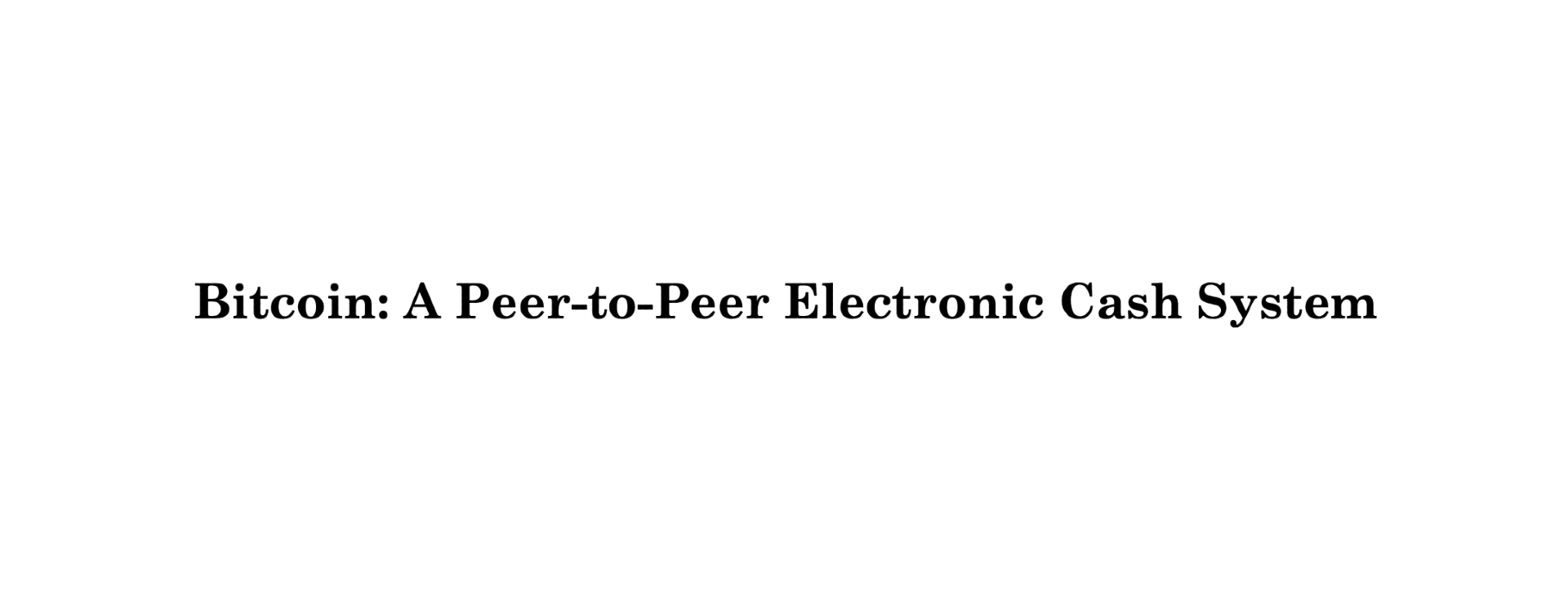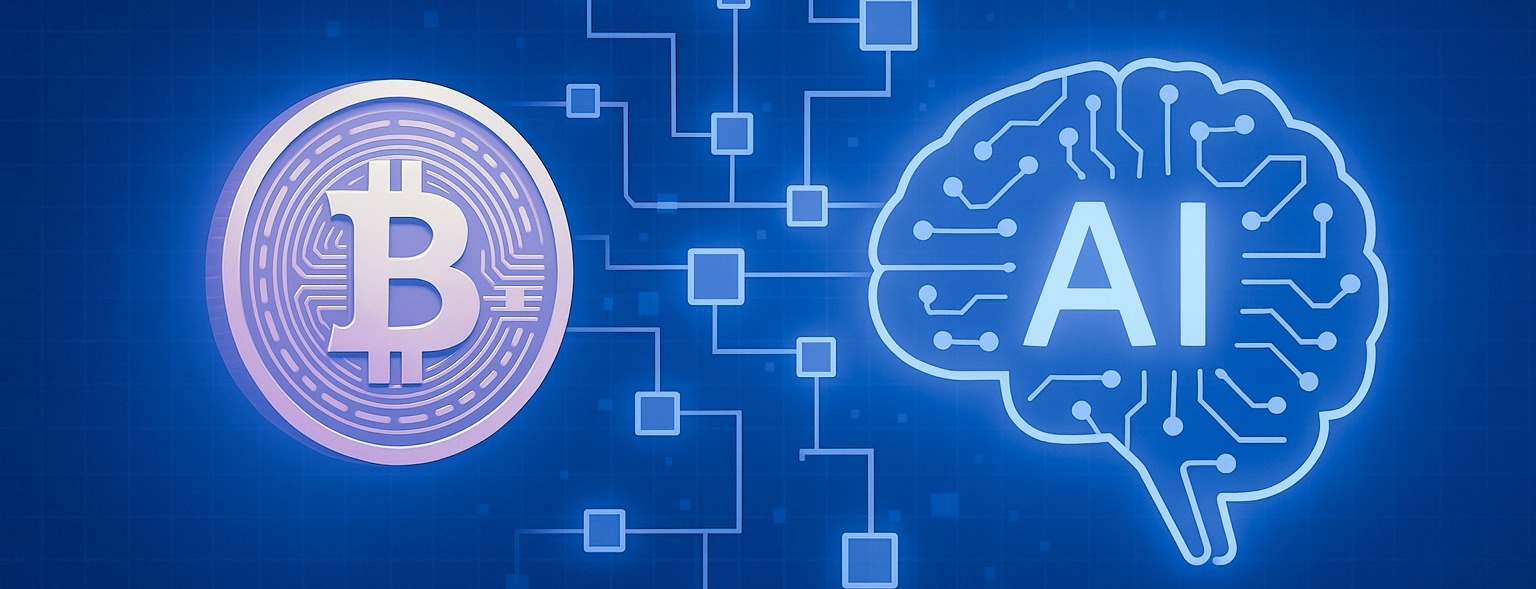
The Bitcoin whitepaper is a document published in 2008 by Bitcoin's creator Satoshi Nakamoto, introducing Bitcoin. This blog post discusses what the Bitcoin whitepaper is and what its content entails.
What Is The Bitcoin Whitepaper?
The Bitcoin whitepaper is a document published exactly 16 years before this blog post, on October 31, 2008, that first presents the operation of Bitcoin and blockchain. The term whitepaper can be seen as a description of a sort of project plan for a cryptocurrency. More specifically, the Bitcoin whitepaper refers to a document published by an individual or group using the pseudonym Satoshi Nakamoto titled: "Bitcoin: A Peer-to-Peer Electronic Cash System". Nakamoto published the whitepaper by sending it to a mailing list of those interested in cryptography. The Bitcoin whitepaper is generally regarded as the most significant document related to Bitcoin, cryptocurrencies, and blockchain technology.
Link to the English version of the Bitcoin whitepaper: https://bitcoin.org/bitcoin.pdf
Content of The Whitepaper
The original English version of the whitepaper is a nine-page document that consists of an abstract and 12 sections.
The table of contents of the whitepaper is as follows:
Abstract
1. Introduction
2. Transactions
3. Timestamp Server
4. Proof-of-Work
5. Network
6. Incentive
7. Reclaiming Disk Space
8. Simplified Payment Verification
9. Combining and Splitting Value
10. Privacy
11. Calculations
12. Conclusion
Next, let's briefly go through the content of the whitepaper section by section:
Abstract
In the abstract, Nakamoto summarizes the purpose and content of the whitepaper. Briefly, Nakamoto's goal is to create a peer-to-peer (P2P) technology that enables direct payments between multiple parties without the need to trust third parties such as banks.
1. Introduction
In the introduction, Nakamoto criticizes the traditional financial system, where people must rely on centralized entities. According to Nakamoto, this traditional system has several issues, such as transaction costs and delays, mandatory collection of customer data, and the impossibility of making irreversible transactions.
Nakamoto argues that these problems can be solved with a system based on cryptographic proof rather than trust. This way, two parties can transact directly with each other without needing to trust a third party like a bank. This approach can address many issues associated with the traditional financial system.
2. Transactions
In the Transactions section, Nakamoto describes the fundamental operating principle of Bitcoin and, simultaneously, the blockchain. The operating principle is described in the whitepaper as follows: Each owner transfers a coin (i.e., bitcoin) to the next owner by making a digital signature. The recipient can verify the signatures to confirm the chain of ownership for the coin.
While signatures can confirm ownership of coins, they cannot prevent what is arguably the most critical challenge related to digital currency: the so-called double-spending problem. This means that someone could spend the same coin twice. In the traditional financial system, the double-spending problem is resolved by having a centralized entity check each transaction for double-spending.
However, Nakamoto presents an alternative that does not require trusting a centralized entity. This alternative requires that the recipient is able to verify whether previous owners of the coin have signed transactions for the coin being transferred to them. Therefore, the recipient must be aware of all prior transactions. This is only possible when transactions are public. Additionally, a method is required for participants in the network to agree on the same order in which transactions have occurred.
3. Timestamp Server
In the Timestamp Server section, Nakamoto proposes a solution to determine the order of transactions using a timestamp server. The timestamp server works by taking the data from a block of transactions and converting it into a cryptographic hash. This hash is then timestamped and published in the form of a block for everyone to see. Each block also contains the timestamp of the previous block, resulting in a chain of blocks, or blockchain. This way, a public timestamp server helps establish the order of transactions, thereby eliminating the double-spending problem.
4. Proof-of-Work
In the Proof-of-Work section, the Proof of Work consensus mechanism is discussed, which ensures network security. Nakamoto explains that, in the Proof of Work consensus mechanism, a block is created using computational power. Thus, a block cannot be changed without using the same amount of computational power. Since the blocks are chained, no block can be altered without redoing the work required for all subsequent blocks. This makes it difficult and costly for malicious actors to act against Bitcoin.
5. Network
In the Network section, Nakamoto describes the functioning of the Bitcoin network step by step. In the Bitcoin network, transactions are sent to all nodes participating in the network. After that, transactions are collected into a block and validated using the demanding Proof of Work consensus mechanism before being added to the blockchain as a block. The nodes then acknowledge this blockchain as the correct version of the Bitcoin network's history.
6. Incentive
In the Incentive section, the challenge of incentivizing critical network participants to act in the network's best interest is discussed. This is challenging in a network without a centralized entity to reward proper behavior. The whitepaper suggests that critical network participants (i.e., miners) are rewarded for their work with new coins (i.e., bitcoins) and transaction fees. This reward principle encourages miners to act in the interest of both themselves and the network.
7. Reclaiming Disk Space
In the Reclaiming Disk Space section, Nakamoto addresses a highly technical topic related to the storage space required by the Bitcoin blockchain. This essentially refers to the transaction history, which requires continually growing storage space. Instead of deleting old transactions, Nakamoto proposed the use of a Merkle tree data structure, which allows for the efficient storage of all transactions. Practically, a Merkle tree is an efficient way to store information using cryptography, making it easy to verify if a part of the stored data has been altered.
8. Simplified Payment Verification
In the Simplified Payment Verification section, it is discussed how the Bitcoin network can be used without a full node containing the entire history of the Bitcoin blockchain. Nakamoto technically describes in this section how Bitcoin can be used without a full node. Therefore, it is possible to use Bitcoin through one’s own cryptocurrency wallet.
9. Combining and Splitting Value
The Combining and Splitting Value section discusses Bitcoin's UTXO-based transaction model. This allows 1 bitcoin to be divided into eight decimal places, meaning the smallest unit of bitcoin is 0.00000001 bitcoin (satoshi). Therefore, it is possible to buy or transfer an amount of bitcoin equivalent to, for example, just one euro, which, as of October 2024, amounts to about 0.000015 bitcoin.
10. Privacy
In the Privacy section, Bitcoin's privacy is addressed and compared to the privacy of traditional banking system. In traditional banking, privacy is achieved by restricting access to transaction data to the parties involved in the transaction and a trusted third party like a bank. Bitcoin significantly differs in that all transactions are publicly accessible because Bitcoin aims to be an open and transparent system. More specifically, as Nakamoto notes in the whitepaper, when someone sends a certain amount of bitcoin to someone else, the transaction is visible to everyone, but without any information that, in principle, would directly associate the transaction with a specific party.
11. Calculations
The Calculations section contains advanced probability calculations related to how unlikely it is for an attack on the Bitcoin network to succeed. Practically, Nakamoto discusses a scenario in which an attacker attempts to create an alternative blockchain faster than the honest chain. The probability calculations presented in this section also indicate how many blocks must appear after a transaction-containing block (i.e., how many confirmations) for the recipient to be confident that the sender can no longer change the transaction.
12. Conclusion
In the Conclusion section, Nakamoto summarizes the essential content of the whitepaper. Digital signatures enable the proof of ownership of bitcoins. In turn, the public peer-to-peer network utilizing the Proof of Work consensus mechanism addresses the double-spending problem. The consensus mechanism also enforces all necessary rules and incentives for the network.
Summary
The impacts of the Bitcoin whitepaper, which initiated Bitcoin, cryptocurrencies, and blockchain technology 16 years ago, are undeniable. However, the effects of the whitepaper published by Nakamoto extend beyond just the cryptocurrency ecosystem, as Bitcoin introduced in 2008 has had an irreversible impact on the entire investment market in recent years.
Ville Viitaharju
Cryptocurrency specialist
Last updated: 31.10.2024 15:00





